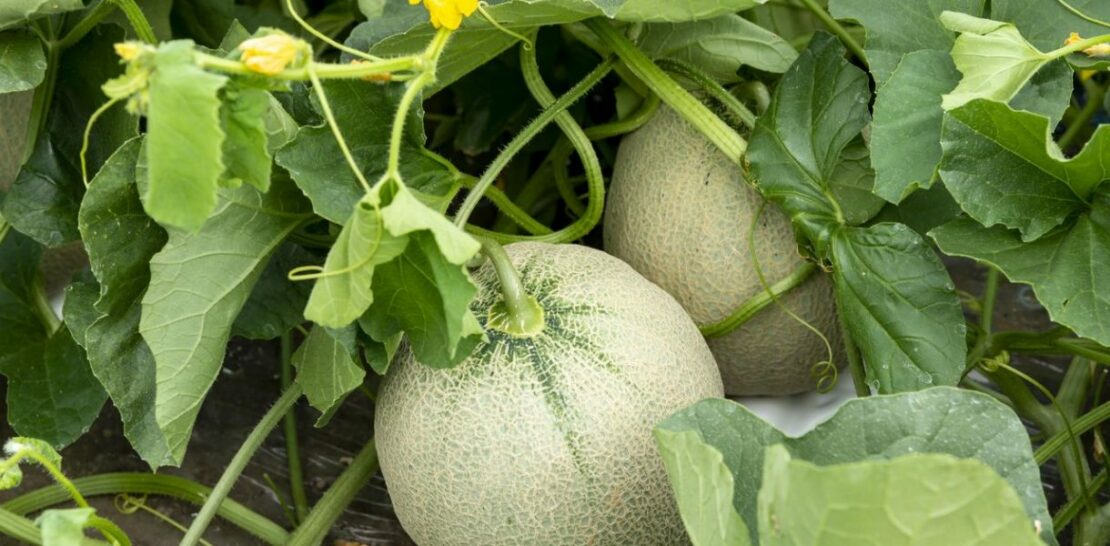When it comes to growing and harvesting delectable melons, both novice and experienced gardeners often find themselves facing a myriad of challenges.
From choosing the right variety to providing the optimal growing conditions, cultivating these mouth-watering fruits can prove to be quite the endeavor.
However, fear not, for we have compiled a comprehensive guide to help you navigate the world of melon gardening.
In this article, we will delve into 10 expert tips that will empower you to grow and harvest juicy, delicious melons that will be the envy of your fellow gardeners and the delight of your taste buds.
1. Select the Ideal Melon Variety
First and foremost, it is crucial to choose the right melon variety to grow in your garden. There are numerous types of melons available, each with distinct characteristics, flavors, and growth requirements. Some popular melon varieties include:
- Cantaloupe: Known for its sweet, orange flesh and netted exterior, the cantaloupe is a classic choice for melon enthusiasts.
- Watermelon: With its refreshing, juicy interior, the watermelon is a summer staple in households across the globe.
- Honeydew: Boasting a smooth, green rind and succulent, pale green flesh, the honeydew melon offers a delightful burst of flavor.
- Canary Melon: A lesser-known but equally delicious variety, the canary melon features a bright yellow exterior and sweet, white flesh.
When selecting a melon variety, it is essential to consider factors such as climate, available space, and personal taste preferences. By conducting thorough research and seeking advice from fellow gardeners or local nurseries, you can make an informed decision and set yourself up for melon-growing success.
2. Provide the Perfect Growing Environment
Once you have chosen the ideal melon variety for your garden, it is time to create the perfect environment for your plants to thrive. Melons have specific growing requirements that must be met in order to produce those juicy, delicious fruits we all crave. The key factors to consider when cultivating melons include:
- Temperature: Melons require warm, sunny conditions to grow and produce fruit. Ensure that your chosen planting location receives at least 6 to 8 hours of direct sunlight per day and maintain a consistent daytime temperature between 70-90°F (21-32°C).
- Soil: To encourage healthy root development and optimal fruit production, melons require well-draining soil rich in organic matter. Amend your soil with compost or well-rotted manure to improve its texture and fertility.
- Water: Melons have a high water requirement, especially during the fruit development stage. Provide consistent moisture by watering deeply and regularly, taking care to avoid wetting the leaves and fruits to prevent disease.
- Space: Melons are sprawling plants that require ample space to grow. Provide a minimum of 18-24 inches (45-60 cm) between plants and 4-6 feet (1.2-1.8 meters) between rows to ensure proper air circulation and prevent overcrowding.
3. Plant Melons at the Right Time
An often-overlooked aspect of melon cultivation is the timing of planting. Melons are heat-loving plants, and sowing seeds or transplanting seedlings too early can lead to a host of issues, such as poor germination, stunted growth, and reduced fruit production. To give your melons the best possible start, adhere to the following guidelines:
- Seeds: Sow melon seeds indoors 4-6 weeks before the last expected frost date in your region. This will allow the seedlings to develop a strong root system and acclimate to outdoor conditions before being transplanted.
- Transplants: Wait until the soil temperature consistently reaches at least 60-70°F (15-21°C) and all danger of frost has passed before transplanting seedlings outdoors. Harden off seedlings by gradually exposing them to outdoor conditions for a few hours each day over the course of a week.
By planting your melons at the right time, you can ensure a strong, healthy start for your plants and set the stage for a bountiful harvest.
4. Employ Proper Planting Techniques
When it comes to planting melons, employing proper techniques can make all the difference in the health and productivity of your plants. Whether you are sowing seeds or transplanting seedlings, follow these expert recommendations:
- Seeds: Plant melon seeds at a depth of 1 inch (2.5 cm) in well-prepared, fertile soil. Space seeds 18-24 inches (45-60 cm) apart within rows, and provide 4-6 feet (1.2-1.8 meters) between rows for adequate air circulation.
- Transplants: Plant seedlings at the same depth they were growing in their containers, being careful not to disturb the delicate root system. Space plants 18-24 inches (45-60 cm) apart and provide 4-6 feet (1.2-1.8 meters) between rows.
- Support: To prevent disease and improve air circulation, consider providing support for your melon plants using sturdy trellises or cages. This will also help to conserve space in smaller gardens.
By following these planting tips, you can create a strong foundation for your melons to thrive and produce an impressive harvest.
5. Fertilize and Mulch for Optimal Growth
Proper fertilization and mulching are essential components of successful melon cultivation. These practices not only promote healthy plant growth but also contribute to the development of juicy, delicious fruits. Consider the following recommendations for fertilizing and mulching your melon plants:
- Fertilization: Apply a balanced, slow-release fertilizer at planting time and again when the plants begin to bloom. Avoid excessive nitrogen, as this can lead to excessive vine growth at the expense of fruit development.
- Mulching: Apply a 2-3 inch (5-7.5 cm) layer of organic mulch, such as straw or wood chips, around the base of your plants. This will help to conserve soil moisture, suppress weeds, and regulate soil temperature.
By incorporating these fertilization and mulching practices into your melon cultivation routine, you can support robust plant growth and bountiful fruit production.
6. Monitor for Pests and Diseases
Melons can be susceptible to a variety of pests and diseases that can negatively impact the health and productivity of your plants. Regularly inspect your melon plants for signs of damage or disease and employ effective management strategies to protect your precious fruits. Some common melon pests and diseases include:
- Aphids: These tiny, sap-sucking insects can cause distorted leaves and transmit viral diseases. Control aphids by releasing beneficial insects, such as ladybugs or lacewings, or applying insecticidal soap or neem oil.
- Cucumber Beetles: These destructive pests not only damage leaves and fruit but also transmit bacterial wilt, a potentially fatal disease for melon plants. Employ physical barriers, such as row covers, and use insecticides approved for cucumber beetles as needed.
- Powdery Mildew: This fungal disease appears as a white, powdery coating on leaves and can lead to reduced fruit production. Prevent powdery mildew by providing adequate air circulation and applying fungicides as necessary.
By vigilantly monitoring your melon plants for pests and diseases, you can take swift action to protect your plants and preserve your harvest.
7. Prune and Train Your Melon Plants
Pruning and training your melon plants can greatly enhance fruit production and overall plant health. By removing excess foliage and directing the growth of your plants, you can improve air circulation, reduce disease pressure, and focus the plant’s energy on fruit development. To effectively prune and train your melon plants:
- Prune: Remove any diseased, damaged, or yellowing leaves as well as any suckers or lateral shoots that compete with the main vine for nutrients and energy.
- Train: Gently guide the growth of your melon plants by weaving the vines through a support structure, such as a trellis or cage. This will not only conserve space butalso improve air circulation and reduce the risk of disease.
By incorporating pruning and training techniques into your melon cultivation routine, you can encourage healthy plant growth and optimize fruit production.
8. Hand-Pollinate for Improved Fruit Set
While melon plants rely on pollinators, such as bees, to transfer pollen from male flowers to female flowers, sometimes natural pollination falls short. Inadequate pollination can result in poor fruit set, misshapen fruits, or reduced yields. To ensure a bountiful harvest, consider hand-pollinating your melon plants by following these steps:
- Identify: Distinguish between male and female flowers on your melon plants. Male flowers typically have a slender stem and a single stamen, while female flowers have a thicker stem and a small, immature fruit at the base.
- Transfer: Use a small paintbrush or cotton swab to collect pollen from a male flower’s stamen and gently dab it onto the stigma of a female flower. This will ensure that the female flower is adequately pollinated and will develop into a healthy, full-sized fruit.
- Repeat: Hand-pollinate several female flowers on each plant to maximize fruit production and ensure a diverse selection of fruits at harvest time.
By taking the time to hand-pollinate your melon plants, you can greatly improve fruit set and enjoy an abundant harvest of juicy, delicious melons.
9. Harvest Your Melons at the Peak of Ripeness
One of the most critical aspects of cultivating mouth-watering melons is knowing when to harvest them. Picking your melons at the peak of ripeness will ensure optimal flavor, texture, and juiciness. Use the following indicators to determine when your melons are ready for harvest:
- Color: Observe the color of the melon’s exterior. Most melons will undergo a noticeable color change as they ripen, such as a cantaloupe developing its characteristic netting or a watermelon turning from a shiny to a dull finish.
- Texture: Gently press your finger into the blossom end of the melon (the end opposite the stem). A ripe melon will yield slightly under gentle pressure, indicating that it is ready to be harvested.
- Aroma: Smell the blossom end of the melon for a sweet, fragrant aroma. A ripe melon will emit a distinct, pleasant scent that serves as a reliable indicator of its readiness for harvest.
By carefully monitoring your melons for these signs of ripeness, you can ensure that you are harvesting them at the perfect time to enjoy their full flavor potential.
10. Store Your Melons Correctly for Maximum Freshness
Once you have successfully grown and harvested your melons, proper storage is essential to maintaining their freshness and flavor. Follow these expert tips for storing your freshly harvested melons:
- Temperature: Store melons at a temperature of 45-50°F (7-10°C) for optimal freshness. Avoid exposing them to temperatures below 40°F (4°C) or above 60°F (15°C), as this can cause chilling injury or accelerated spoilage.
- Humidity: Maintain a relative humidity of 85-90% to prevent the melons from drying out and losing their juicy texture.
- Separation: Store melons separately from other fruits and vegetables, as they emit ethylene gas that can cause other produce to ripen prematurely or spoil.
By adhering to these storage guidelines, you can prolong the freshness of your melons and savor their delicious flavor for an extended period.
In conclusion, cultivating juicy, delicious melons is a rewarding endeavor that requires careful planning, attention to detail, and a passion for gardening. By following these 10 expert tips, you will be well on your way to enjoying a bountiful harvest of mouth-watering melons that are sure to delight your taste buds and impress your fellow gardeners. Happy growing!




